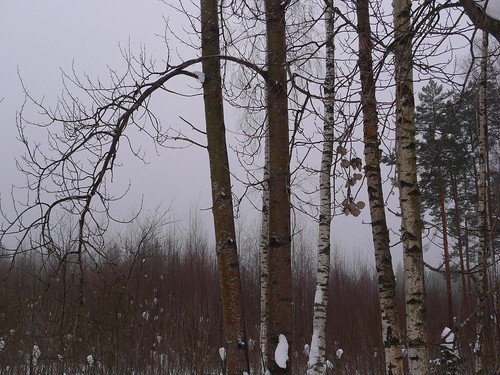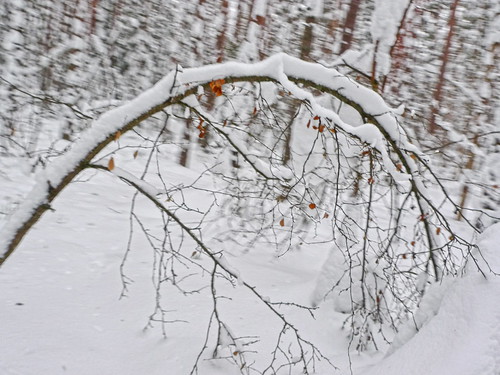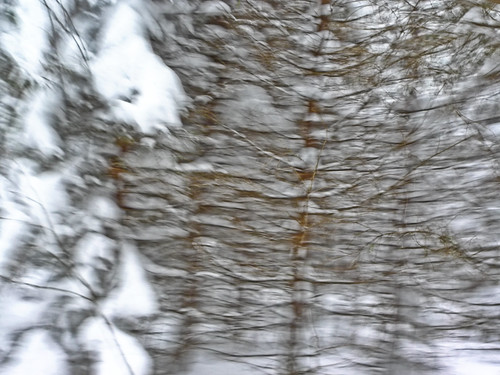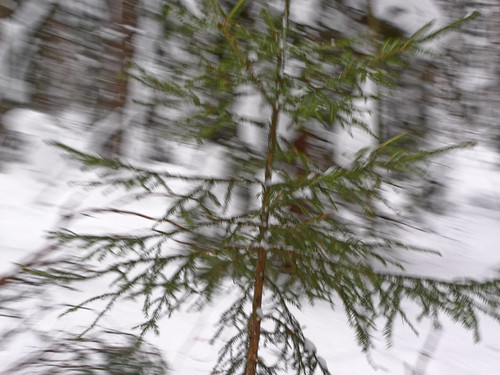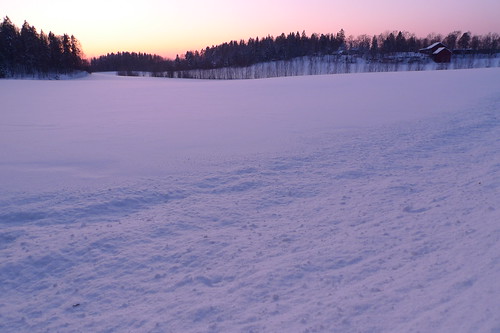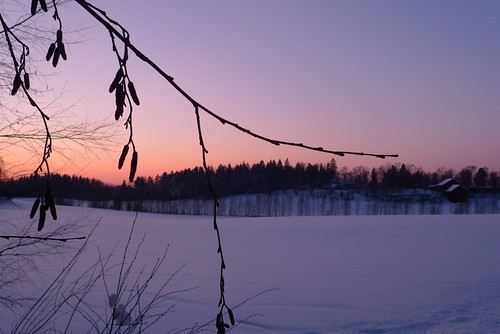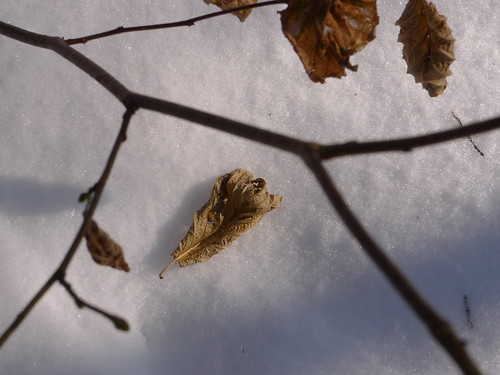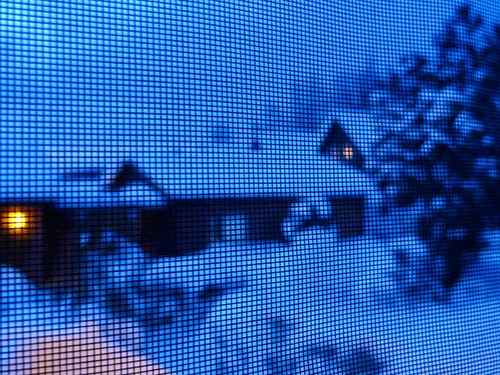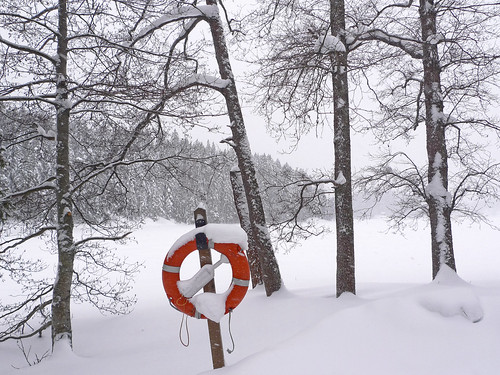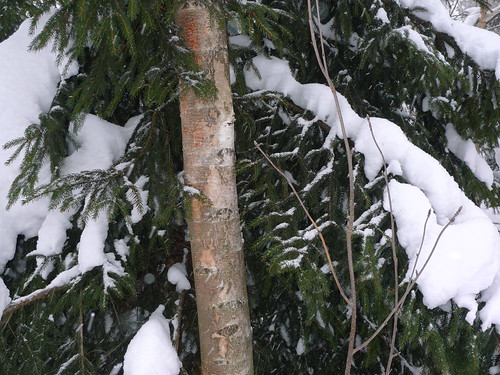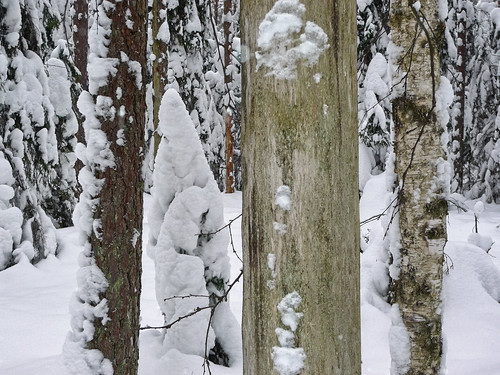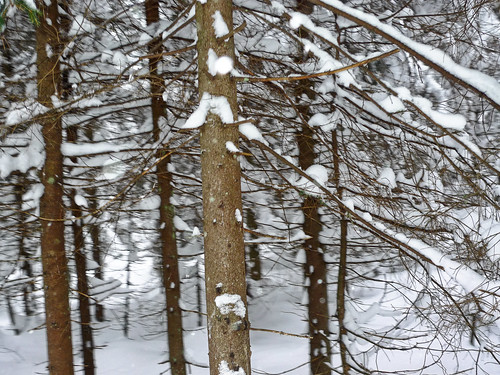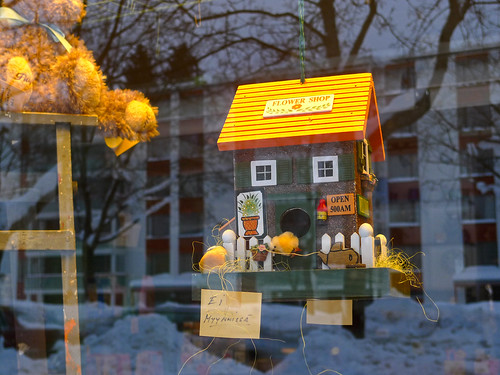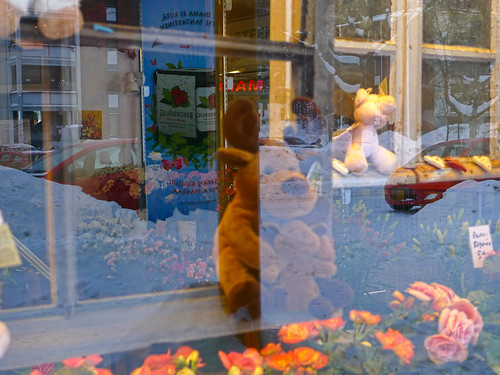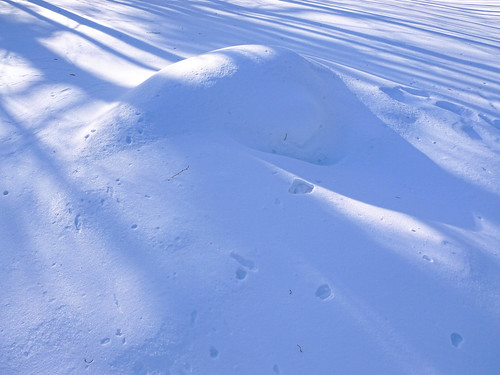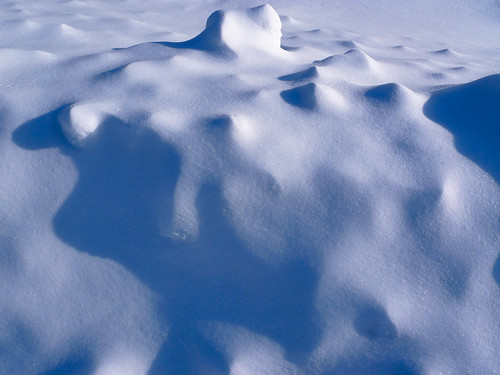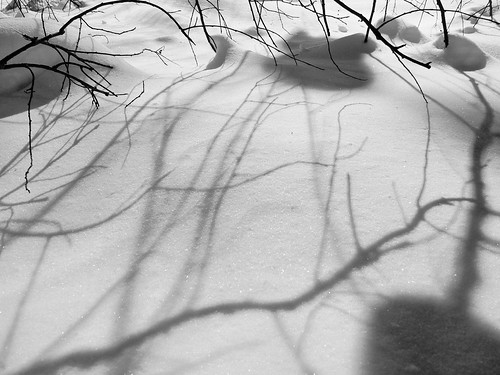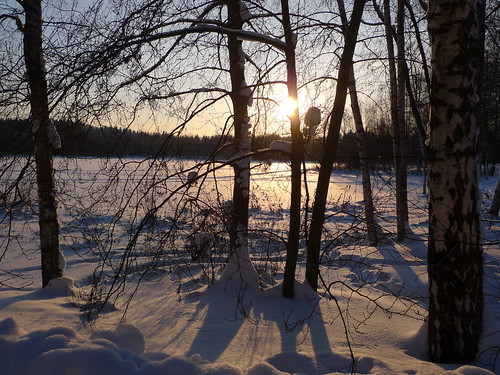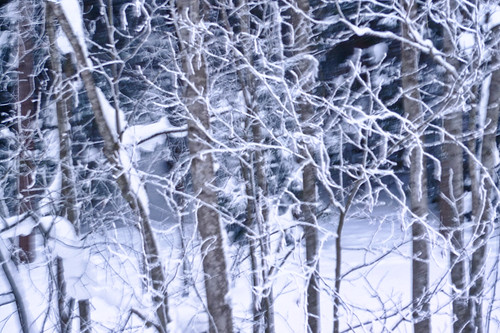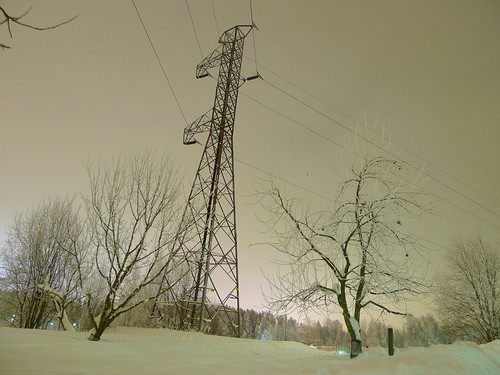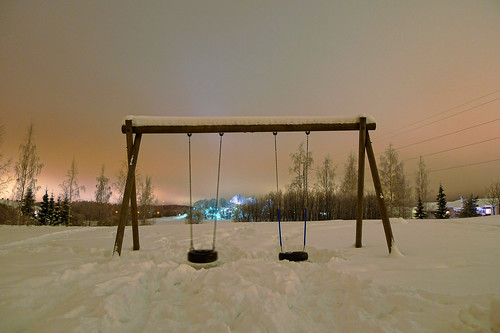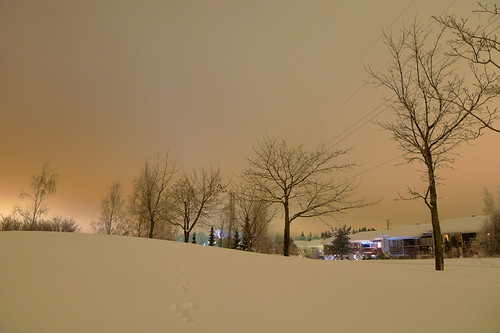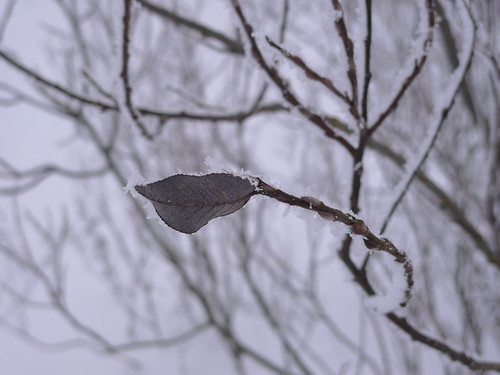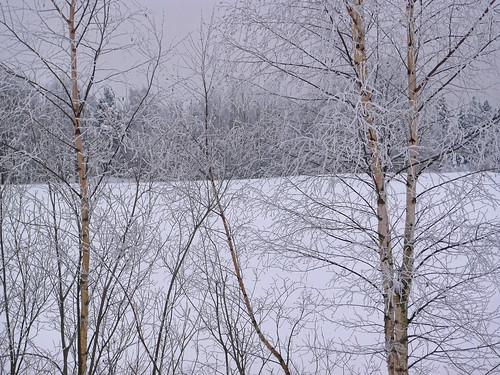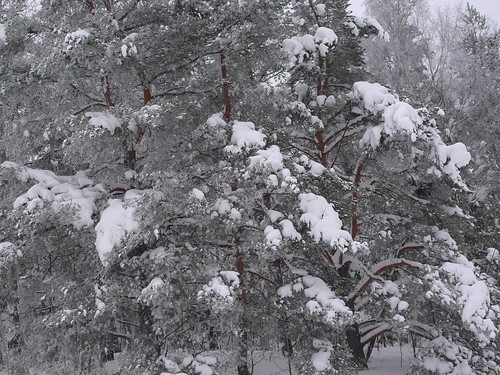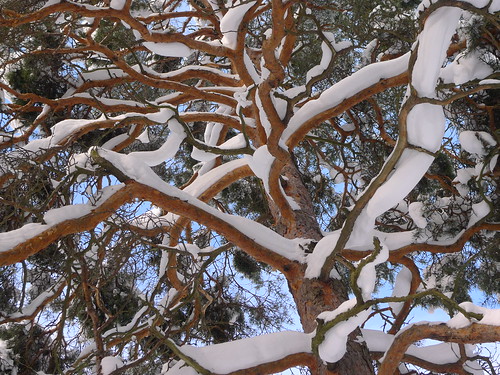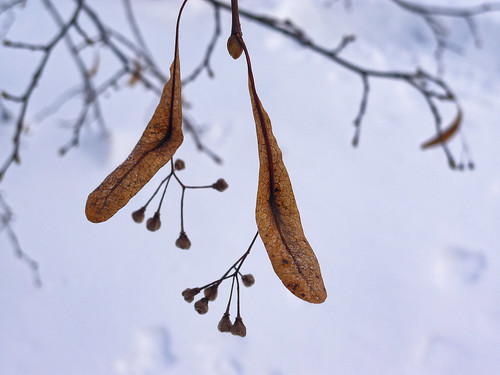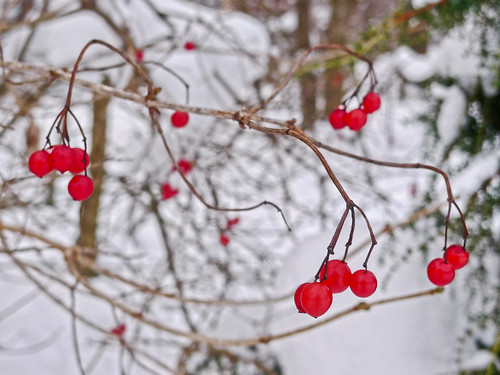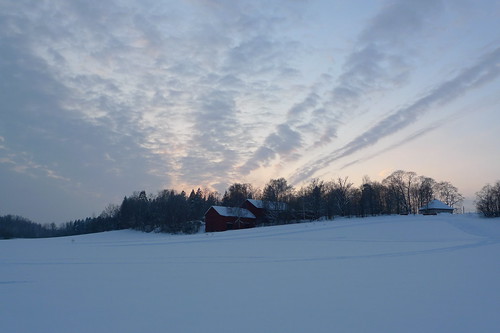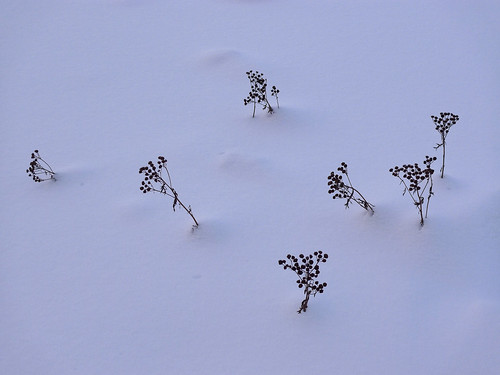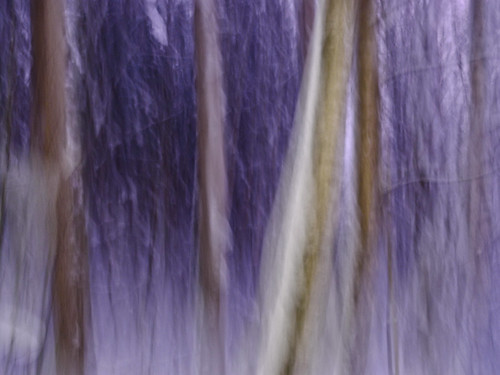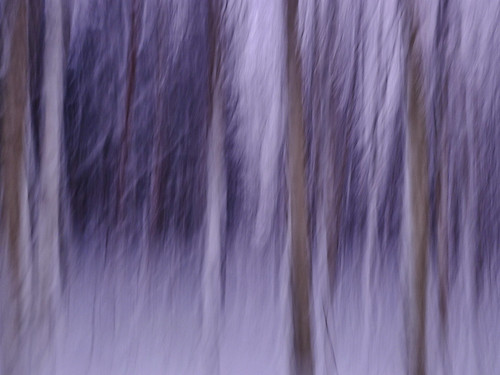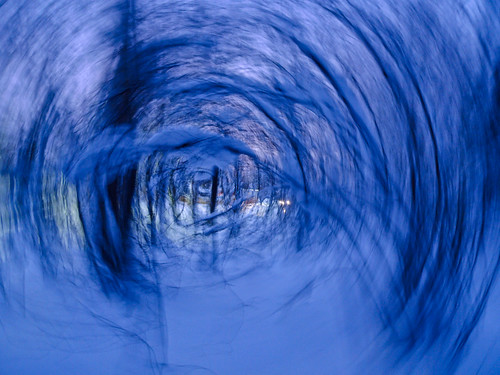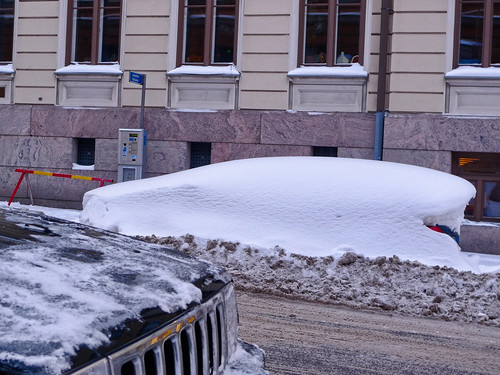Today we get a little bit of rain, a little bit of snow. Temperature is above freezing, snow is melting and sliding down from roofs. Next two days are predicted to be warm also, but then it will get colder again.
I have been reading a lot during the recent days. Yesterday I finished two books: Hit and Run by Lawrence Block and The Overlook by Michael Connelly. Crime fiction both - good dialog, interesting characters, clear writing. I admire Block especially, he makes writing seems so effortless, although what he manages to do is really hard to achieve. Next on the list, some science fiction.
Update: I read Robert Silverberg's short novel "Sailing to Byzantium", which is one of his most well known works. The book refers to a similarly titled poem by William Butler Yeats. I liked the story, although it has been revisited in some other stories of Silverberg.
Silverberg has been for me a difficult writer, ever since I first read him in high school. The book I read then was Downward to the Earth, and I didn't like it much. But the story stuck in memory. Later I read some other books by him which I really liked, for example books in the Majipoor series. But I think it would be nice to reread Downward to the Earth at some point. I think some of his books are too artificial - a common problem in science fiction - and the writing is sometimes plodding. But at his best he is great.
Today I wasn't much interested in photography, perhaps due to the wet weather. Maybe tomorrow is better. But there is a lot of stories to be read in case photography does not interest.
Sunday, February 28, 2010
Raining and snowing
Saturday, February 27, 2010
Getting warmer
Today the temperature rose above 0 °C, and snow started to melt and fall down from trees. It was thickly clouded, sun not visible at all. I went for a walk with the children. And we made some snowmen as well.
Yesterday I tried reading "Gravity's Rainbow" by Thomas Pynchon but failed miserably after two dozen pages or so. I have tried reading Pynchon earlier, but no luck. I think he is overrated as a writer. Or then I'm just stupid.
I started instead reading "The Hot Kid" by Elmore Leonard, and I'm almost finished with it. This novel is set in the time of The Great Depression. It is more black in tone than some other books by Leonard, but the realistic dialogue is once again first-class. His rule on writing is "If it sounds like writing, I rewrite it."
Friday, February 26, 2010
Non-sharp is better
Sometimes a sharp photograph is less true to the original scene that a blurry one. Here are three specimens from today, taken while skiing in a forest.
Thursday, February 25, 2010
Snow work
There is so much snow on the roofs on houses that people are climbing up there to shovel it down. I did a couple of hours of shoveling today, throwing down 8-10 tons of snow, which is quite a job for anyone not usually doing heavy physical work. The photograph illustrates the amount of snow we have on our garden.
I have been reading some old books, many of which aren't good at all, but even bad writing can be entertaining sometimes. It is interesting that the blurbs on the covers of books sometimes reveal more than they perhaps intend. For example, "work that is original in design" - but is it any good, does it work? Or "enough plot twists" - can the reader follow the writing?
Wednesday, February 24, 2010
Winter sunset
Here are two sunset photographs. The first one shows the same landscape as in the earlier posting from today. Quite a different feeling at sunset.
Working with snow
I have been shoveling snow more than enough during the last few days. Today was for a change a sunny day, blue skies and no clouds. But there was still some snow work to be done. And it was so bright outside that it hurt the eyes. But I won't complain about that, better this way than clouded and snowfall.
Tuesday, February 23, 2010
Illusions
There is something funny going on in this photograph. When you look at it in a large size on screen, there seem to be bright dots blinking in the meeting points of the lines of the grid, where there should be only dark. I'm not sure whether this is an artifact of the human visual system, or the (LCD) display.
Theme: red circles
Today we got about 10 cm of new snow, and the depth of snow is now 66 cm. We went out with the children to enjoy the snow, although there was a bit too much of it. Here are three photographs having a sort of unifying theme.
Monday, February 22, 2010
Samsung EX1 (TL500) - the "LX3 killer"?
Today we got more snow. I went skiing, spent 1027 kcal in 1.5 hours, and took some photographs with the LX3. This time I mostly used flash to catch some of the falling snowflakes.
I can't avoid commenting the new camera from Samsung, known either as EX1 or TL500. (It is interesting the EX1 reads LX3 upside down.)
The specification are impressive: a f/1.8...2.4 lens (24 to 72 mm equiv.), manual controls, 1/1.7 inch sensor (apparently the same as in the Canon S90), 3 inch 614k AMOLED swivel screen, and a lot of other features.
But there are also many questions. The first impressions so far have been positive, but I'm not sure those writing them are knowledgeable enough so that they know what to look for.
For example, does the camera allow manual focus in addition to automatic focus modes? Can you save custom settings as you can with the LX3? Are the control knobs robust enough so that they are not turned by mistake? What about the lens - is it sharp enough at the corners at 24 mm and f/1.8? Also handling: how fast the camera focuses, what about shutter lag, etc. Further, are the jpegs from the camera "overcooked" (as is usual), and thus is RAW necessary to get competent images. On the LX3 I haven't used RAW at all.
Well, I guess we just have to wait and see. I'm afraid that the Samsung EX1 / TL500 is more of a high-spec toy that a serious tool for photography. I hope I'm mistaken.
Sunday, February 21, 2010
Not for sale and layers
Here are two photographs taken today, both looking at the same flower shop window, to different directions. I like this shop.
Originally I wanted to write a comment on Do Photographs Have to Have Depth?, but I'm too tired to think and write.
Saturday, February 20, 2010
Cold and blue, windy and sunny
It is cold today, and a snow storm is predicted to arrive here next night. But it was a sunny day today, and although the wind was biting, it was nice to be walking outside. Not many people were outside, despite the sunshine, but having the right clothes the weather wasn't much of a problem.
Friday, February 19, 2010
A whole lot of snow
Today I didn't manage to go out for a walk until at night. It was snowing for most of the afternoon, but then it started to clear up. Here are two photographs taken today, of the snow of course.
Thursday, February 18, 2010
Winter sun
Today the sun set at 5:17 PM - so late that it was possible to enjoy a bit of sunshine after the workday. Here are three photographs taken some minutes before sunset. It was cold, -12 °C, and it felt like real winter. This is how it should be.
Wednesday, February 17, 2010
Biathlon with a camera - or deliberate blurring?
I speculated earlier about a new sport, replacing the rifle with a camera in biathlon. Today I went skiing, and took mostly sharp photographs. It seems that with practise and concentration you can improve the sharpness of photographs quite a lot. On the other hand, I also used motion blur deliberately, shooting from the hip while skiing.
Tuesday, February 16, 2010
Night photography
Today I once again resorted to long exposures at night, putting the LX3 on top of snow. Here are three images, in all I tried to emulate the "natural" white balance of the eye as well as possible. And it was in fact quite bright, even though the eye didn't see the colors as well as the camera did.
Monday, February 15, 2010
Skiing - there is no better way to enjoy the winter
Today evening I went cross-country skiing for an hour, enjoying the winter landscape which had got some frost during the cold night. I took some photographs, of which here are three specimens. There is enough light for hand-held shooting even at 5:30 PM, so it is nice to carry a camera when skiing.
A colleague took today some photographs of me at work. He is starting a photography project, taking environmental photographs of (mostly) researchers in their offices. This is a challenging topic - how much you can do in such a setting?
But he seems to have invented a good approach, using a 24 mm lens (Canon L series) with a full-frame camera (Canon EOS-1Ds Mark III). It is not often one sees such a wide lens used for portraiture. But apparently you can make it work.
Sunday, February 14, 2010
A great day to be outdoors (and some words on photography books)
We went outside today with the children, to enjoy the sunshine at noon. It was cold, but not too cold, and the children enjoyed playing in the snow.
I took quite a few photographs, but didn't really concentrate on photography, but no matter, this was a fine day anyway.
Since finishing the book "Within the Frame" by David duChemin, of which I wrote a somewhat caustic review, I have returned to re-reading other books about photography.
Freeman Patterson's "Photographing the World Around You" was even better than I remembered, providing a feast of discussion about developing photography skills. Now I'm re-reading "Photography for the Joy of It" (by Freeman Patterson and André Gallant), another great book which I have read two or three times previously, but always find new insights there.
Update: I have been thinking about micro 4/3 cameras every once in a while, especially Olympus E-PL1 (which is not yet available). TOP had some time ago an excellent posting about "small format", here is a quote: "The vast majority of consumers has no need for anything above micro 4/3. Proof? They have survived just fine until now with p&s microscopic sensors! [...] That takes care of 80% of the market. End of story. [...] Like it or not, the current vast majority of "photographers" who claim to need more are of the pixel-peping variety. Or in other words: the furthest removed from photography one can get!"
Why I haven't yet invested in micro 4/3 is down to two things: lens selection and the excellence of the Panasonic LX3. If there were two lenses (in addition to the existing and excellent Panasonic 20 mm f/1.7), I would take the leap: a 12 mm (24 mm equiv.) f/2.8 pancake and a 40 mm (or 50 mm) f/2.8 macro. These three lenses would be all that is needed, at least for the moment. Going back to primes, that would be an interesting thing indeed.
Saturday, February 13, 2010
Looking for colors (and selected photographs)
Today was a gray winter day, so I went searching for colors outside. Some was to be found...
I also did a little bit of looking at my photographs. I updated the Flickr sets of my most viewed and most interesting photographs. There were some slight changes in the sets since September 2009 but not much. It seems that my older photographs are dominating in this kind of statistics.
To bring up some of the more recent work, I made a new set, called Selected photographs, containing 16 more recent photographs. I feel that this collection better shows my current interests in photography - the photographs in the most viewed and most interesting sets are somewhat different from these "Selected photographs". Perhaps I'm evolving a bit as a photographer.
Friday, February 12, 2010
Winter light
Sun is setting later and later, now at about 5 pm, which is a big change from December. I went skiing with our youngest daughter, who is very keen on it, and took a couple of photographs on the way.
Thursday, February 11, 2010
Experiments in long exposure motion blur
There is a nice essay on motion blur photography at Luminous Landscape, titled “The Light Fantastic”. Encouraged by it, I did some experiments in motion blur today, after sunset when the sky had gone blue and the street lights were providing their different hues to the color mix.
Here are three photographs which I though were the best of the bunch. Not too bad - but it takes a lot of experimentation to get any results worth looking at.
Wednesday, February 10, 2010
A book review (sort of)
First, care to guess what car is hidden under the snow in the photograph? (I have no idea.)
As I wrote here earlier, I bought some new photography books, based on recommendations from TOP and Amazon etc. But it has been slow going with them.
In any case, I finally finished reading "Within the Frame: The Journey of Photographic Vision" by David duChemin. First of all, I must say it is an interesting book, and probably valuable for many readers. But not for me.
In fact, I grew angry when trying to read book, which is very untypical. I found the writing to be very self-centered, and this wasn't helped by a kind of arrogant, preaching tone. I'm not saying anything about the writer, only about how the text felt to me.
This is just a personal opinion. Please keep this mind when reading further, I can't help being more sharp than usual with this book.
First, what this book is about? Perhaps one of the following:
- camera gear
- photographic vision
- David duChemin's vision
Only one of these is right, can you guess which? Yes, the last one, overwhelmingly so.
The book contains pointers to some technical issues, but uses a condescending tone, for example suggesting that if you don't know how to handle your camera, practise the handling for one week in your room, so that you know the controls even with eyes closed. (I'm paraphrasing a bit here.) Similar kind of "helpful" advice was elsewhere as well, suggesting that if you don't know something, go practise.
The book does contain some occasional gems (but all too few), and you definitely get the impression that the writer is a pro - or should I write "PRO".
The book tells how DdC takes photographs and what is his vision. For example, catch people smiling so it is easy for the viewers to identify with the subject of the photograph. (I'm also paraphrasing here.)
The photographs are mostly good (but not great), and well done in post-processing. I couldn't help comparing them with the work of Andreas Manessinger, who I think makes a better job of it, although he is not a PRO as DdC is. (That was cheap, I guess I'm a bit angry still.)
I think better sources of learning are to be found elsewhere, especially if you are interested in photography and not in how DdC takes photographs.
Although I must admit some parts of describing the working methods were quite interesting, but they were not what I was looking for in the book, and not relevant to my photography. I'm that kind of photographer who is not at all interested in taking photographs of people he or she doesn't know, preferring other subjects. Of course, I'm definitely not a pro, so who I am to critizise the photography?
What matters is that I will not return to DdC's book any day soon. Tom Ang, Freeman Patterson and Michael Freeman (just three examples) provide in their guides - in my opinion - much more useful discussion about vision in photography than this book in which the work "vision" is so repeatedly used.



